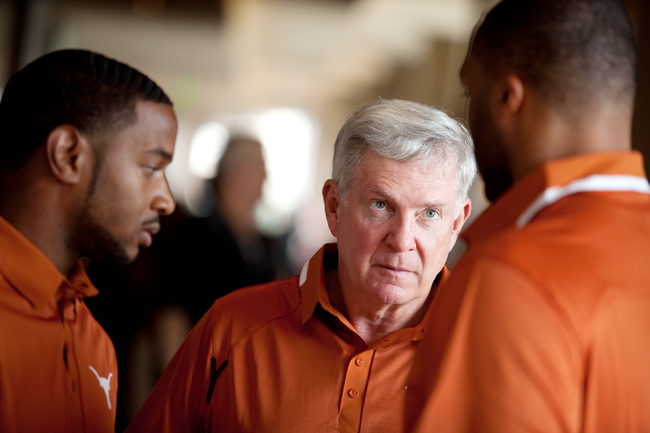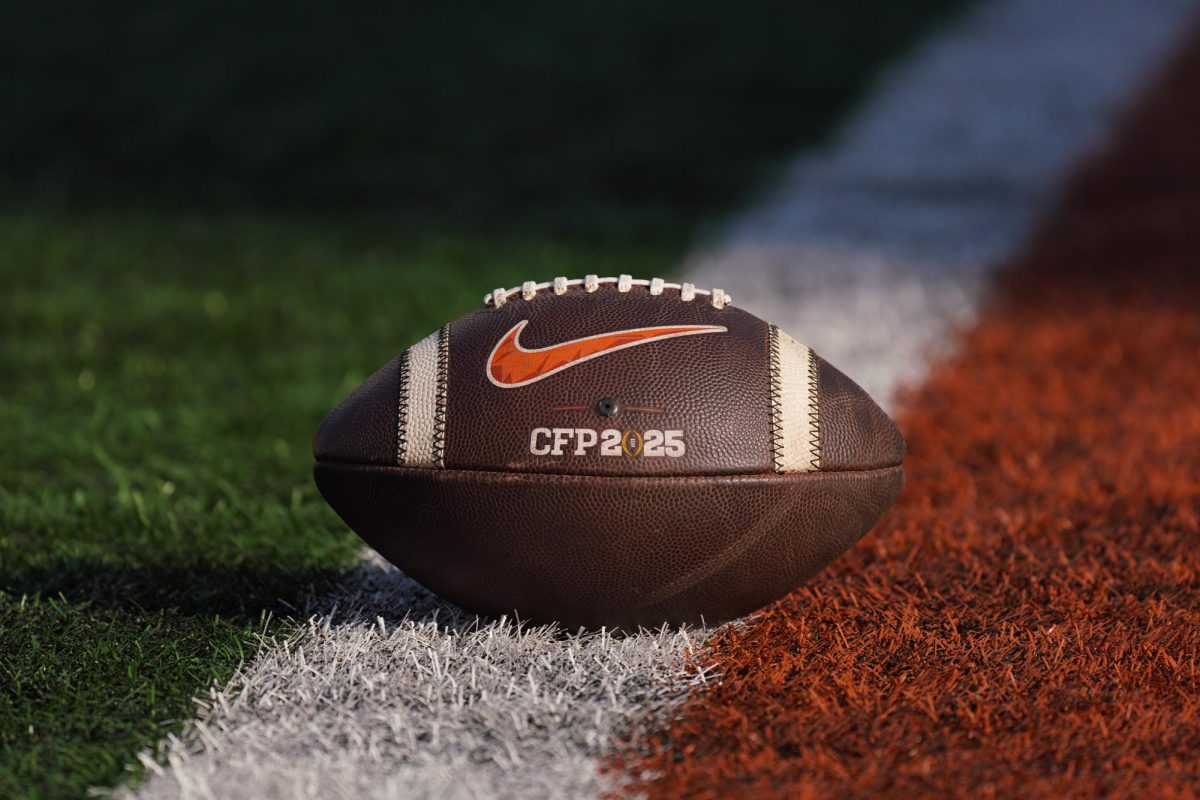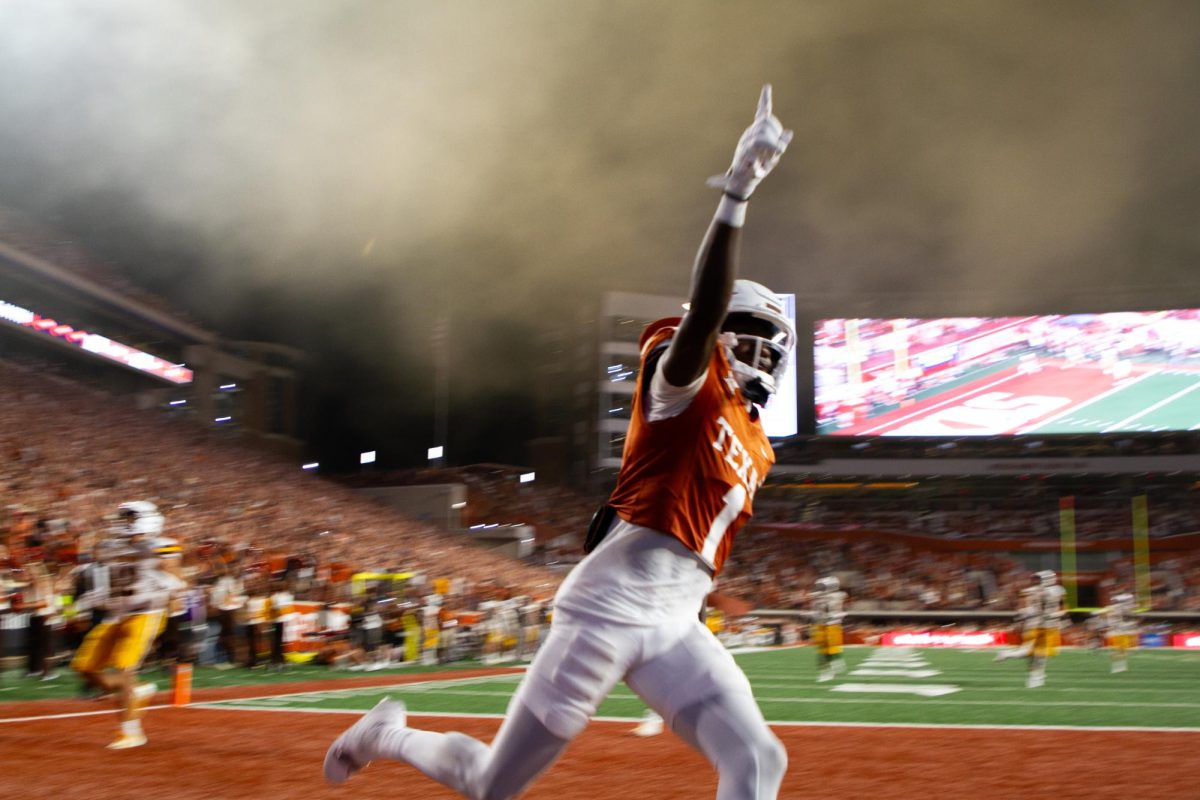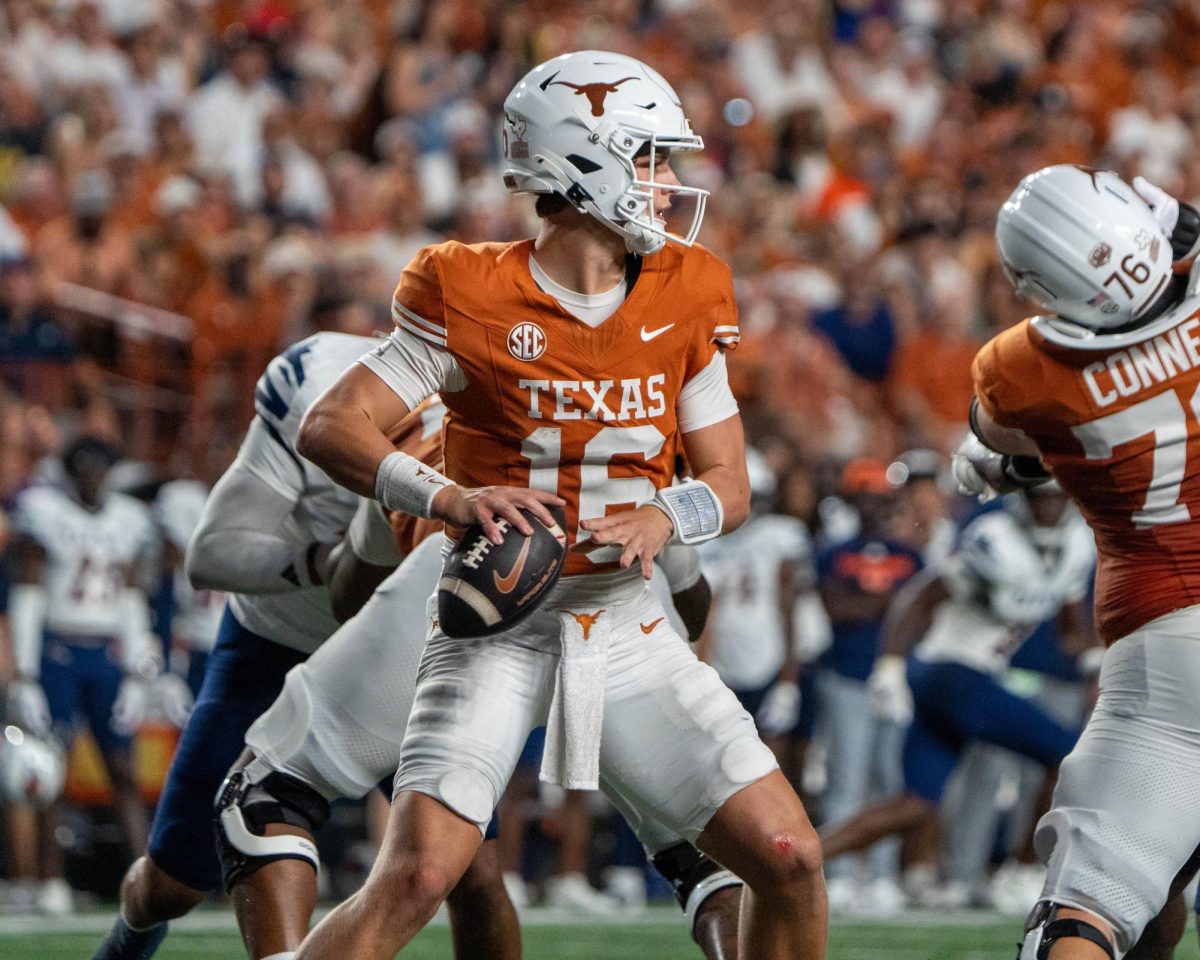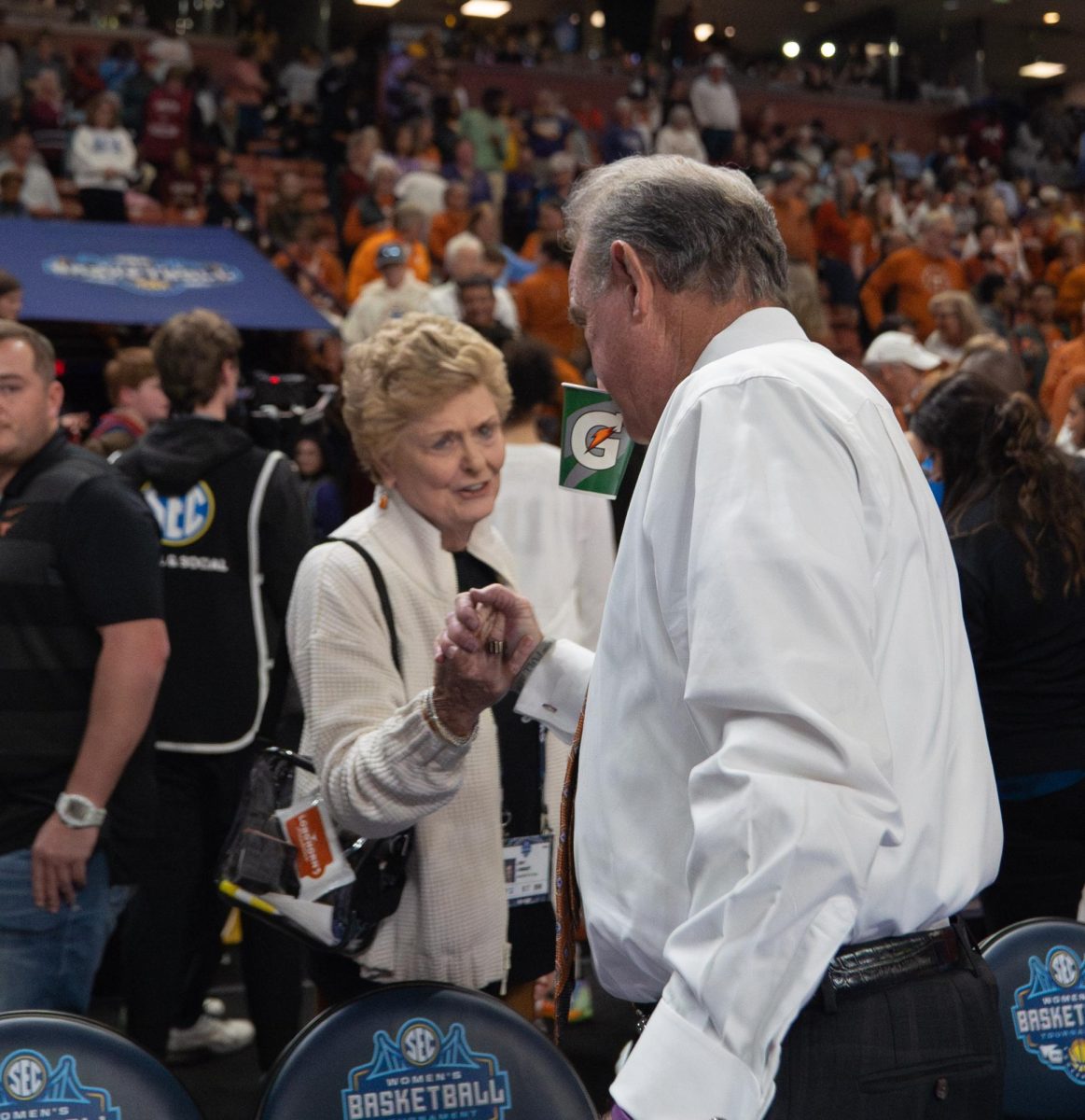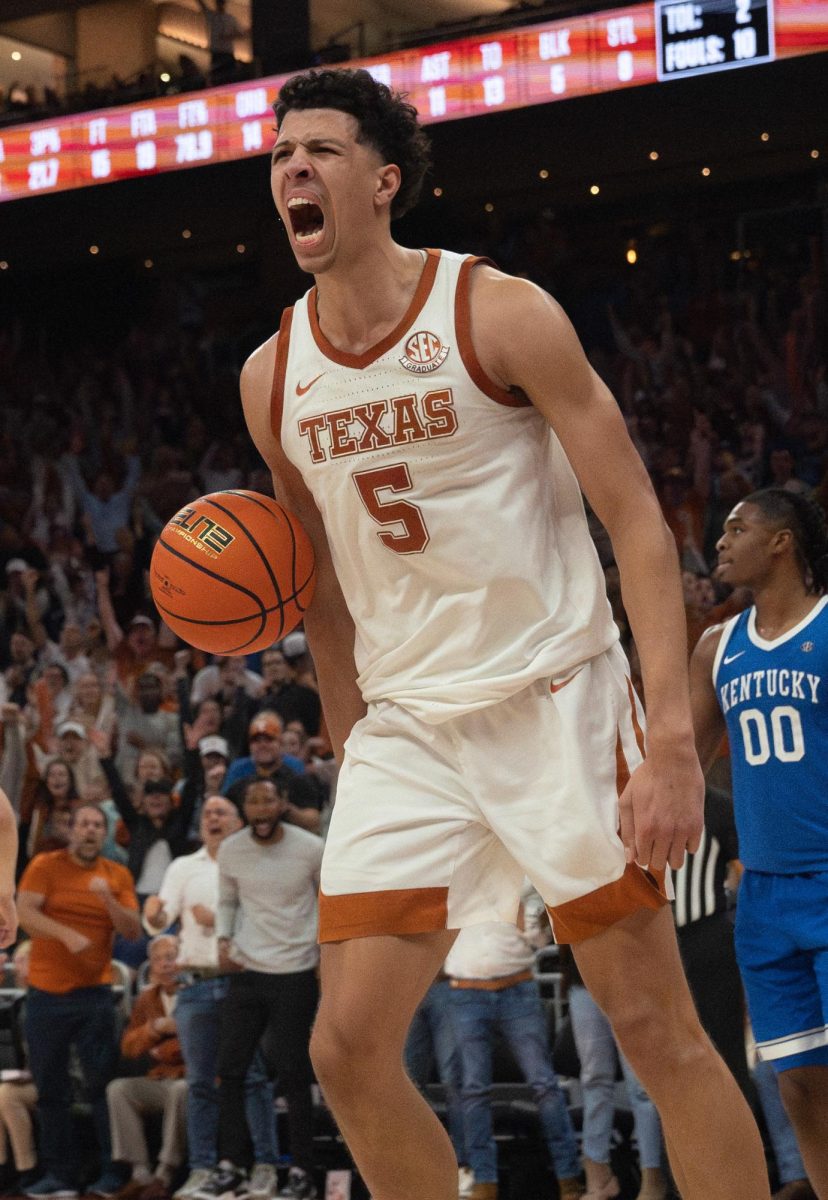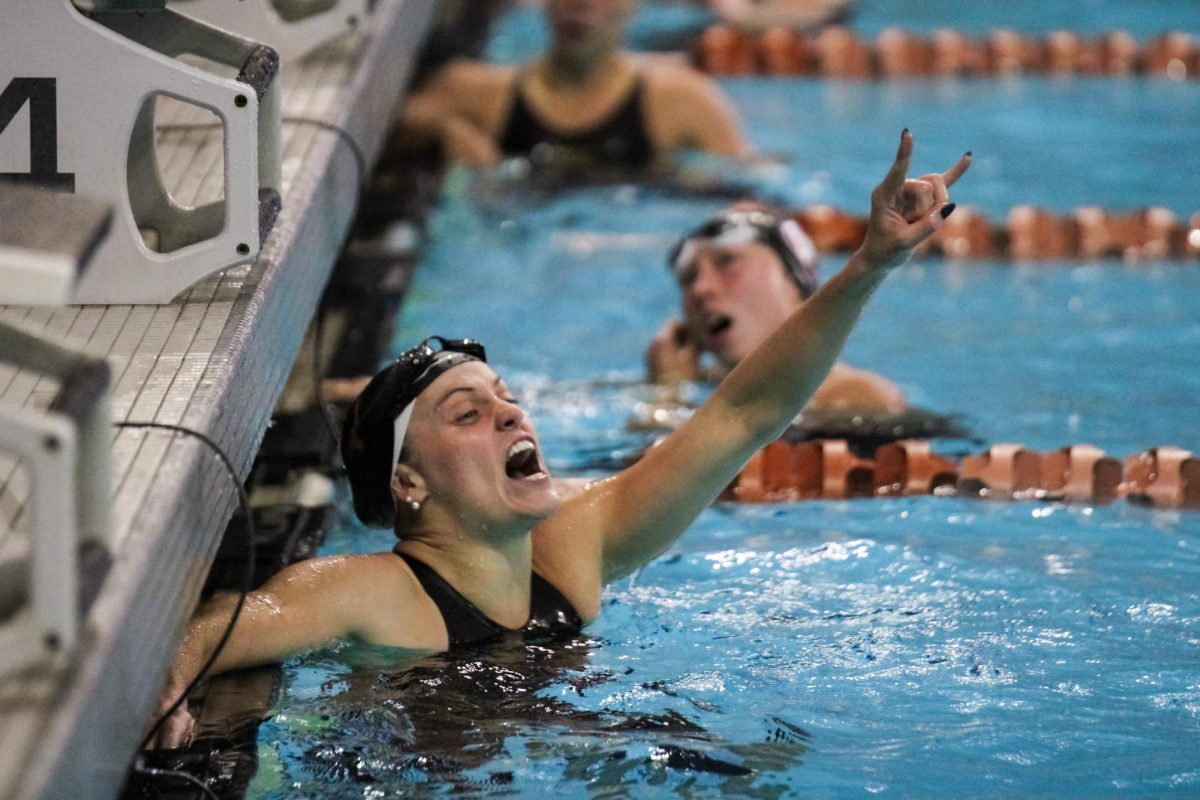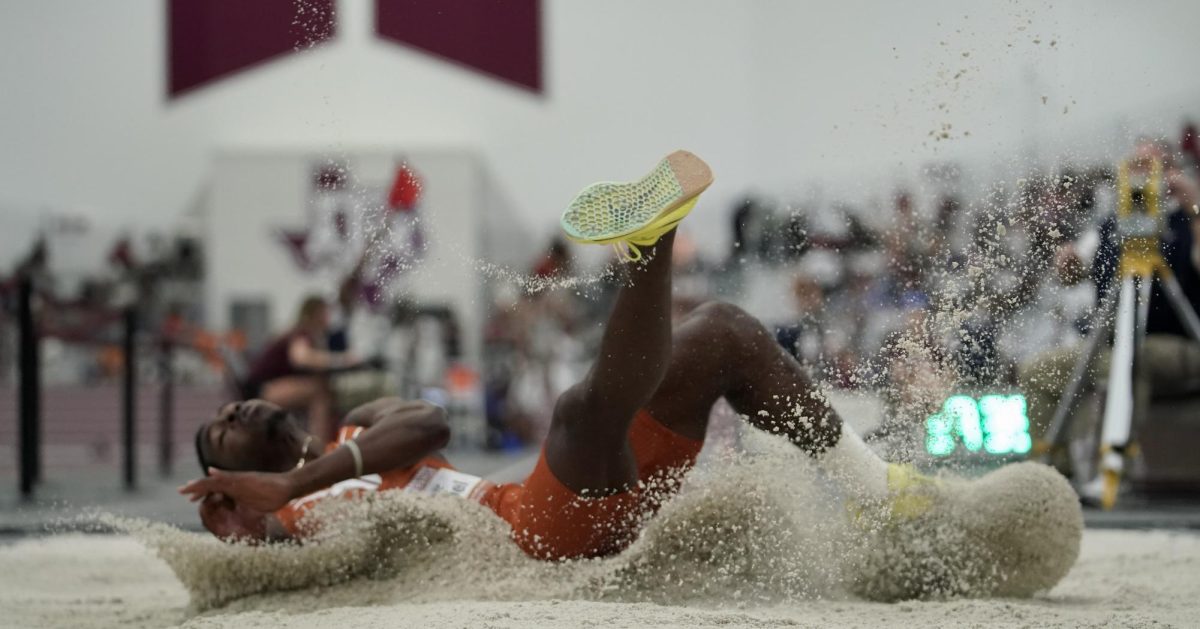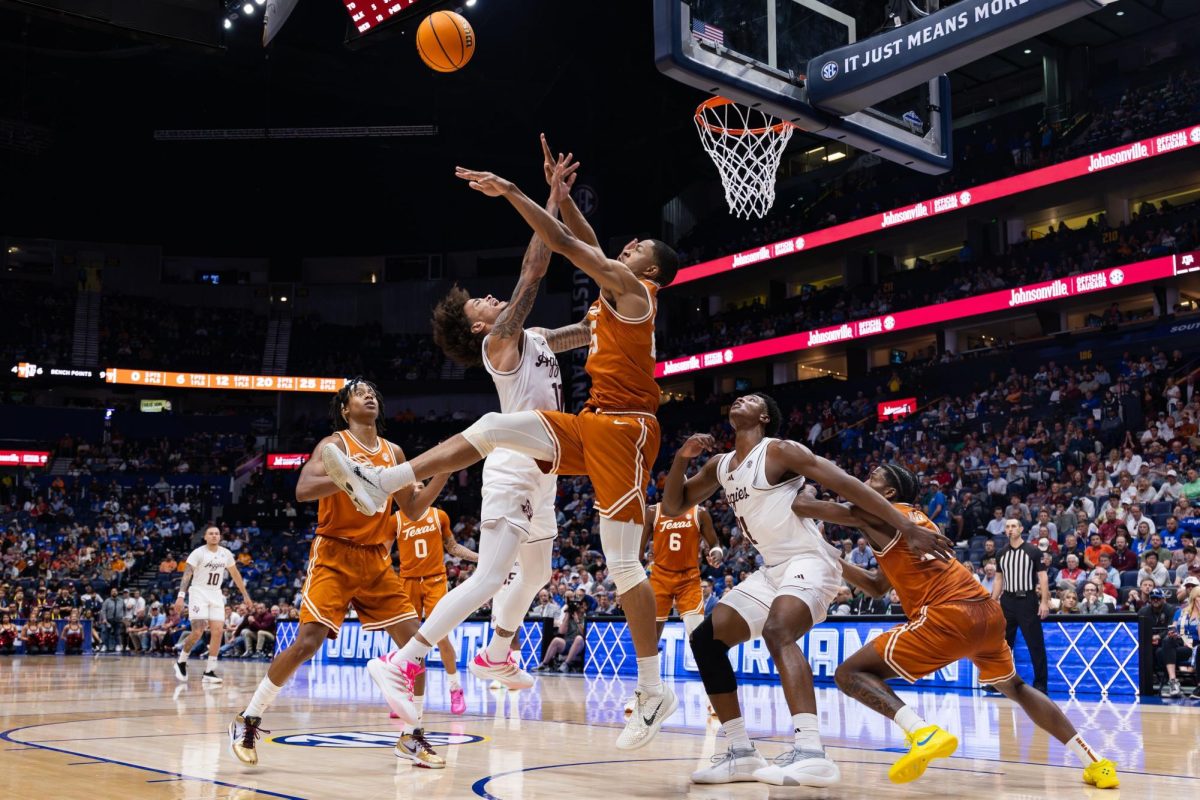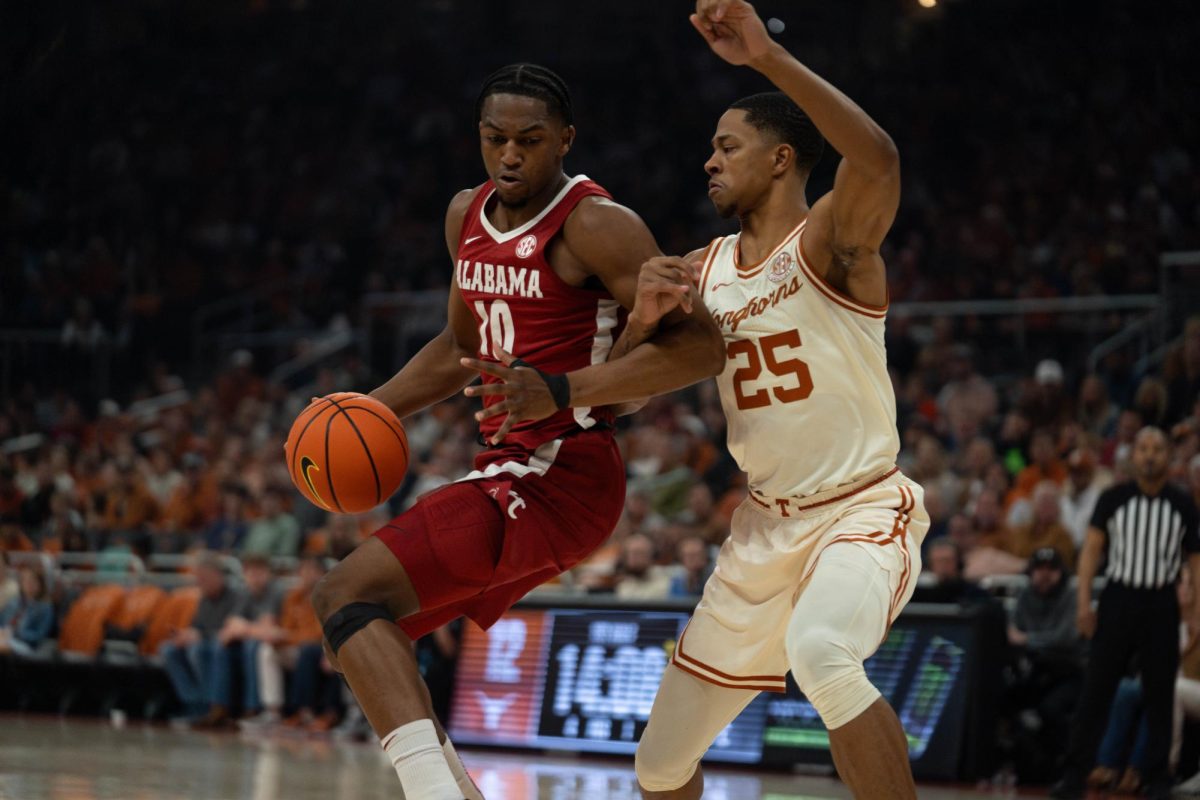DALLAS — Some changes are coming to the 40 Acres this fall as the Longhorns enter fall workouts.
Last week’s Big 12 Media Days in Dallas highlighted several important changes that fans would see in the upcoming football season. Head coach Mack Brown was enthusiastic about junior David Ash’s cemented role as the starting quarterback and the Longhorns’ new up-tempo offense.
In addition, the Longhorns will have to get used to a new controversial rule regarding targeting.
For the first time in his career, Ash won’t be entering fall workouts in the middle of a quarterback controversy.
“We’re so excited to have David with experience, with maturity,” Brown said. “We think we’ve got better players around him now. We should be better in the offensive line. He is much more confident.”
Ash has been in a battle with teammate Case McCoy for the starting spot ever since he stepped on campus. However, after his performance in last year’s Alamo Bowl, the team has not questioned his ability to lead.
“He’s doing an outstanding job,” said senior offensive guard Trey Hopkins. “He’s more comfortable as a leader. He’s doing a job just communicating with each and every player. The respect was building after that Oregon State game.”
Even though he has no current competition, Ash is still in the media spotlight and will enter the season with a target on his back. Expectations of championships surround him.
“I wouldn’t have it any other way. I wouldn’t want to be in a place where 9-4 is a good season,” Ash said. “That’s not what I came to Texas for. I came to Texas to win a national championship.”
Ash is one of two returning quarterbacks that have significant experience starting in the Big 12. Casey Pachall is returning for TCU after sitting out most of the 2012 season after being arrested for driving under the influence.
Up-tempo offense expected to help both sides of the ball
The Longhorns will debut their new up-tempo offense when they take the field at the end of August, a move coaches and players praised at the Big 12 Media Days last week. Texas is following in the footsteps of a host of other Division I schools, such as Ohio State and UCLA, who have utilized these faster offenses in past seasons. The faster pace is expected to increase the number of plays in a game from 60-70 to around 80-90, according to Brown.
“I think that changing to the up-tempo will help our defense more than our offense,” Brown said. “Nobody was substituting and the ball was being snapped so quickly.
… It was a real disadvantage to our defense that they didn’t get to see tempo at any time during practice."
Players on both sides of the ball are in favor of this new style of offense.
The new up-tempo offense employs the same play schemes but features shorter intervals between plays. There is less time to substitute players or decide on calls.
“It’s been an adjustment,” Ash said. “I’m really glad that’s the direction we’re going. It’s going to benefit us a lot.”
The Longhorn defense has already been given a look at the up-tempo offense in practice in order to prepare them for the upcoming
season. Brown said the defense struggled in past games when facing up-tempo offenses without the proper preparation.
“Almost every team in the Big 12 does the tempo offenses,” senior defensive end Jackson Jeffcoat said. “It helps us analyze offenses quickly, get our reads before the snap.”
SC head coach Lane Kiffin has exhibited concern with player safety and the referee’s ability to officiate a faster game. Conferences are considering an extra official to rectify this. The Big 12 is experimenting with an eighth official this season whose primary job is to retrieve the ball and set it for play.
Controversial rule change won’t affect how Longhorns approach the game
The NCAA and Big 12 are introducing several rule changes this fall, including a new controversial rule regarding targeting. Targeting is when a player intentionally hits an opponent with the top of his helmet in the opponent’s head or neck region. This foul results in a 15-yard penalty and the ejection of the player. However, the ejection is automatically reviewed by the officials in the booth and the disqualification, but not the foul, can be overturned if it is clear that the player did not intentionally target his opponent.
If a player is ejected, he must sit out the remainder of the game. If the foul was committed in the second half of the game, he is required to sit out the first half of the team’s next game.
Officials have instructed coaches to rework the way they teach tackling in preparation for the upcoming season. The rule was changed in order to increase player safety.
“The culture of the game has to change relative to how players have to act,” said Walt Anderson, Big 12 head of officiating. “You’ve got to lower your strike zone … If your target zone is high, you’re going to be suspect.”
Despite this new rule, players at Texas aren’t worried about it. They said that they need to just continue playing and working with integrity.
“It doesn’t really affect the way you have to practice for hitting,” Jeffcoat said. “When you’re taught to hit, you’re not taught to lead with your head and hit somebody in their head, so sometimes it just happens.“

